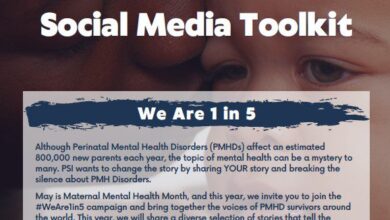Can Exercise Cause Miscarriage? – PROnatal Fitness

The benefits of prenatal exercise is well established, both for parent and child. Some of these benefits include fewer pregnancy aches and pains, shorter labor, fewer interventions during labor, and faster postpartum recovery.
Despite the overwhelming evidence supporting its effectiveness, exercise in the early stages of pregnancy – particularly in the first trimester – tends to cause uncertainty for those who fear miscarriage. This may be especially true for those who may have experienced a previous pregnancy loss.
Let’s set the record straight so you can proceed with knowledge rather than fear. This article will discuss how common miscarriage is, the known causes so far, and some evidence-based exercise guidelines to help you navigate the uncertainty of the first trimester.
Getting Fast facts
- Miscarriage is a type of pregnancy loss that occurs up to 20 weeks gestation (after 20 weeks, it is referred to as stillbirth).
- Miscarriage occurs in about 10-20% of known pregnancies (Wilcox et al., 1988).
- The main cause of miscarriage is chromosomal abnormalities – with one study finding that it is the cause of 82% of first trimester miscarriages (Ozawa et al, 2019).
Think about that last point: About 8 out of 10 miscarriages are due to factors out of one’s control. Hopefully, this will help you sort through any guilt or guilt you may feel if you’ve experienced an early pregnancy loss, or allay fears that you may cause a miscarriage in the future.
Exercise is NOT a Causative Factor
Certain factors have been found to potentially increase the risk of miscarriage, such as maternal age, obesity, and alcohol consumption (Mayo Clinic, 2021). However, at this time, exercise does not appear to cause miscarriage (Davenport et al., 2019).
Of course, since the exact cause of the miscarriage is often not determined, many people are quick to blame themselves for something. they did, especially exercise. This can create a lot of hesitation and fear around exercise. So, below are some guidelines to help you move your body in a safe way and reduce the risk to the fetus.
Safe Exercise Guidelines
It is important to start by recognizing the official guidelines laid down by American College of Obstetricians and Gynecologists (ACOG). ACOG advises those with uncomplicated pregnancies to engage in aerobic and strength-training activities before, during, and after pregnancy — with the goal of even 20-30 minutes per day of moderate intensity activity on most, if not all, days of the week.
Activities to Avoid
ACOG advises people to avoid the following activities:
- Engage in activities with a high risk of abdominal trauma
- Dive under the sea
- Exercise in High Heat and Humidity
Additional Tips for Safe and Effective Exercise
ACOG also provides the following tips to reduce risk to the fetus:
- Use RPE to measure your intensity (not a heart rate monitor). To understand what RPE is and how to use it to find a safe and effective intensity during exercise, check out this article on finding a safe intensity to work at. Those who are sedentary before pregnancy should start at a lower intensity and follow a more gradual progression.
- Stay well hydrated and avoid high heat and humidity to protect against heat stress, especially in the first trimester.
Tips to Get Started
Here are some resources to help you exercise safely and effective during pregnancy:
Warning Signs to Stop
ACOG lists the following as signs to stop exercise. You may also want to consult your medical provider:
- Genital bleeding
- Stomach ache
- Regular painful contractions
- Discharge of amniotic fluid
- Dyspnea before exercise
- Dizziness
- Headache
- Chest pain
- Muscle weakness affects balance
- Calf pain or swelling
The Bottom Line
The important takeaway is there there is no evidence to date that says exercise causes miscarriage (the main reason is chromosomal abnormalities). Additionally, ACOG strongly encourages regular physical activity for the benefit of pregnant women and the fetus. Be sure to follow the guidelines above to ensure you are exercising in a way that minimizes stress on the fetus.
More Resources
If you are interested in safe and effective total body exercises for all stages of pregnancy, check out our prenatal training programs and services. Or, if you’re a health and fitness professional interested in learning how to coach pre and postnatal clients, explore our pre & postnatal professional education.
Sources:
Davenport, MH, Kathol, AJ, Mottola, MF, et al. (2019). Prenatal exercise is not associated with fetal mortality: a systematic review and meta-analysis. British Journal of Sports Medicine. 53, 108-115.
https://www.mayoclinic.org/diseases-conditions/pregnancy-loss-miscarriage/symptoms-causes/syc-20354298
Ozawa, N., Ogawa, K., Sasaki, A., Mitsui, M., Wada, S., & Sago, H. (2019). Maternal age, miscarriage history, and embryonic/fetal size are associated with cytogenetic outcomes of spontaneous early miscarriage. Journal of assisted reproduction and genetics. 36(4), 749–757.
Wilcox, AJ, Weinberg, CR, O’Connor, JF, Baird, DD, Schlatterer, JP, Canfield, RE (1988). The incidence of early pregnancy loss. New England Journal of Medicine. 319, 89-94.





